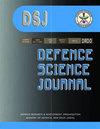A Novel Goal oriented Sampling Method for Improving the Convergence Rate of Sampling based Path Planning for Autonomous Mobile Robot Navigation
IF 0.8
4区 工程技术
Q3 MULTIDISCIPLINARY SCIENCES
引用次数: 0
Abstract
Autonomous Mobile Robots' performance relies on intelligent motion planning algorithms. In autonomous mobile robots, sampling-based path-planning algorithms are widely used. One of the efficient sampling-based path planning algorithms is the Rapidly Exploring Random Tree (RRT). However, the solution provided by RRT is suboptimal. An RRT extension known as RRT* is optimal, but it takes time to converge. To improve the RRT* slow convergence problem, a goal-oriented sampling-based RRT* algorithm known as GS-RRT* is proposed in this paper. The focus of the proposed research work is to reduce unwanted sample exploration and solve the slow convergence problem of RRT* by taking more samples in the vicinity of the goal region. The proposed research work is validated in three different environments with a map size of 384*384 and compared to the existing algorithms: RRT, Goal-directed RRT(G-RRT), RRT*, and Informed-RRT*. The proposed research work is compared with existing algorithms using four metrics: path length, time to find the solution, the number of nodes visited, and the convergence rate. The validation is done in the Gazebo Simulation and on a TurtleBot3 mobile robot using the Robotics Operating System (ROS). The numerical findings show that the proposed research work improves the convergence rate by an average of 33% over RRT* and 27% over Informed RRT*, and the node exploration is 26% better than RRT* and 20% better than Informed RRT*.一种提高自主移动机器人导航路径规划收敛速度的目标导向采样新方法
自主移动机器人的性能依赖于智能运动规划算法。在自主移动机器人中,基于采样的路径规划算法得到了广泛的应用。快速探索随机树(RRT)是一种有效的基于采样的路径规划算法。然而,RRT提供的解决方案不是最优的。称为RRT*的RRT扩展是最优的,但是需要时间来收敛。为了改善RRT*收敛缓慢的问题,本文提出了一种基于目标导向采样的RRT*算法GS-RRT*。提出的研究工作的重点是通过在目标区域附近取更多的样本,减少不必要的样本探索,解决RRT*收敛缓慢的问题。在三种不同的环境中,以384*384的地图大小对所提出的研究工作进行了验证,并与现有的RRT、目标导向RRT(G-RRT)、RRT*和Informed-RRT*算法进行了比较。利用路径长度、寻找解的时间、访问的节点数量和收敛速度这四个指标,将所提出的研究工作与现有算法进行了比较。验证是在Gazebo仿真和TurtleBot3移动机器人上使用机器人操作系统(ROS)完成的。数值结果表明,该算法的收敛速度比RRT*平均提高33%,比Informed RRT*平均提高27%,节点搜索速度比RRT*平均提高26%,比Informed RRT*平均提高20%。
本文章由计算机程序翻译,如有差异,请以英文原文为准。
求助全文
约1分钟内获得全文
求助全文
来源期刊

Defence Science Journal
综合性期刊-综合性期刊
CiteScore
1.80
自引率
11.10%
发文量
69
审稿时长
7.5 months
期刊介绍:
Defence Science Journal is a peer-reviewed, multidisciplinary research journal in the area of defence science and technology. Journal feature recent progresses made in the field of defence/military support system and new findings/breakthroughs, etc. Major subject fields covered include: aeronautics, armaments, combat vehicles and engineering, biomedical sciences, computer sciences, electronics, material sciences, missiles, naval systems, etc.
 求助内容:
求助内容: 应助结果提醒方式:
应助结果提醒方式:


